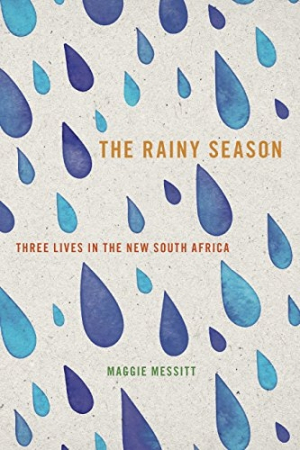The Rainy Season
Three Lives in the New South Africa
- 2015 INDIES Finalist
- Finalist, Social Sciences (Adult Nonfiction)
Wise beyond her years, Messitt explores with vivid resonance the failures and triumphs of three South African people.
Life in post-apartheid South Africa has created many new challenges for the nation’s citizens as traditional village customs have clashed with newfound political freedom and slowly emerging economic opportunities. Maggie Messitt, currently a doctoral student in Ohio University’s creative nonfiction writing program, offers a fascinating view of how two women and one man, representing three different generations from the rural village of Rooibok, grapple with these changes, in The Rainy Season: Three Lives in the New South Africa.
The author calls this book an exercise in “immersion journalism” resulting from her living in Rooibok from 2003 to 2011. Remarkably, this twenty-something young white woman gained the trust of the three black villagers, despite the fact that two of them lived much of their lives under apartheid’s racial yoke. This book is most notable for its sense of place and time that reveals the complexities behind such seemingly typical events as weddings, funerals, farming, and shopping. Casting a dark shadow over village life are the AIDS epidemic and a government that offered more hurdles than help for the three citizens.
The book is comprised of chapters about life during the rainy season—spring, summer, and autumn—and within each chapter are alternating stories about Thoko Makwakwa, a middle-aged sangoma (healer) and owner of an illegal pub, Dankie Mathebula, a young man struggling with the death of a much beloved cousin while preparing for his university admission exams, and Regina Hlabane, an elderly weaver who cofounded the Mapusha weaving cooperative ten years before this book takes place.
At times, the book’s overly detailed descriptions dilute the entertaining and poignant dialogue. This is apparent in the several pages devoted to the funeral of Maduza (Dankie’s cousin). However, much of the description of the land and customs has a captivating poetic resonance. Also included are a helpful glossary and a list of characters.
While this fine memoir does not provide much historical or political context, it is a compelling personal portrayal that reveals the beautifully complicated lives of three villagers in modern South Africa.
Reviewed by
Karl Helicher
Disclosure: This article is not an endorsement, but a review. The publisher of this book provided free copies of the book to have their book reviewed by a professional reviewer. No fee was paid by the publisher for this review. Foreword Reviews only recommends books that we love. Foreword Magazine, Inc. is disclosing this in accordance with the Federal Trade Commission’s 16 CFR, Part 255.

